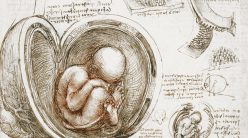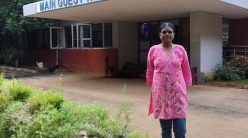2023 marks the birth centenary of the influential mathematician Harish-Chandra who spent two important years at IISc
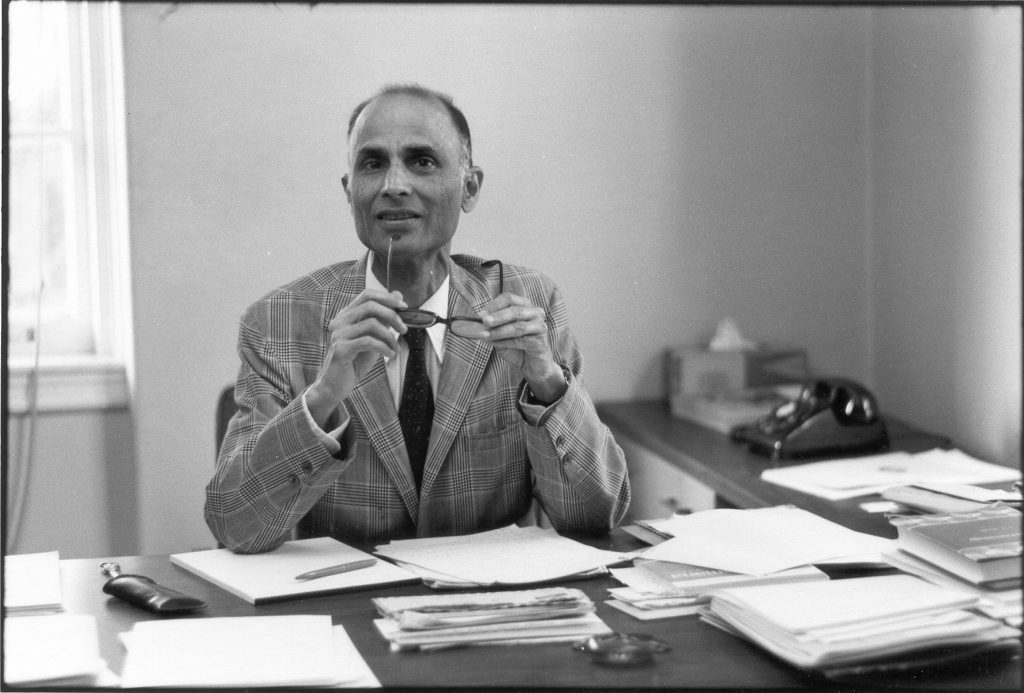
“The book of nature is written in the language of mathematics,” declared the Italian astronomer and physicist Galileo Galilei in an essay titled The Assayer published in 1623. Mathematics is an indispensable tool for physicists who strive to uncover the secrets of nature. The bond between the two subjects has always been strong – be it calculus developed by the English physicist Isaac Newton in his effort to understand the physics of flow and motion, or imaginary numbers discovered by the Italian mathematician Girolamo Cardano which proved indispensable in the formalisation of quantum mechanics centuries later.
Although the two subjects are closely related, they have vastly different goals and approaches. Physics, a modern science, cares more about understanding matter and its behaviour using theories, experiments, models, and observations, while mathematics, a much older discipline, is more concerned with abstract quantities, spaces, structures and ideas using purely logic and reasoning. This dichotomy, perhaps, is why physicists and mathematicians have different priorities and temperaments, and do not often switch teams. There are instances of mathematicians moving to physics, mostly to address theoretical questions for which they are trained. However, not many physicists give up their day job to ply their trade as “pure” mathematicians, barring a few.
One such exception is Harish-Chandra. Having started out in theoretical physics, he subsequently became one of the greatest modern mathematicians from India. He revolutionised representation theory and harmonic analysis of groups – fields that would grow into major topics of interest in the latter half of the 20th century. In his biography of Harish-Chandra, the Abel Prize-winning mathematician RP Langlands says this about Harish-Chandra’s contributions: “It is difficult to communicate the grandeur of Harish-Chandra’s achievements and I have not tried to do so. The theory he created still stands – if I may be excused a clumsy simile – like a Gothic cathedral, heavily buttressed below but, in spite of its great weight, light and soaring in its upper reaches, coming as close to heaven as mathematics can.”
But under what circumstances did Harish-Chandra switch to mathematics? It is rumoured that, while once on a walk with the renowned physicist Freeman Dyson at Cambridge, Harish-Chandra, then still in physics, said, “I am leaving physics for mathematics. I find physics messy, unrigourous, elusive.” The story seems to suggest that his decision to switch to mathematics was somewhat sudden. However, his transformation into a mathematician was far from abrupt.
A crush on math at Allahabad University
Harish-Chandra – he spelt his name with a hyphen after a mistake by a copyeditor at the Proceedings of the Royal Society – was born in 1923 in Kanpur, Uttar Pradesh. He was conspicuously precocious and successful in school, writes Roger Howe in a brief memoir about the mathematician published by the National Academy of Sciences, USA in 2011. “He graduated from Christ Church High School at 14, from intermediate college in Kanpur at 16, received the BSc from the University of Allahabad at 18, and the MSc at 20. On his MSc exam, in physics, he received first place in the state of Uttar Pradesh, with a perfect written examination, which earned him gold medals.”
As an undergraduate student, Harish-Chandra once stumbled upon physicist Paul Dirac’s book Principles of Quantum Mechanics at the university library. He was “immediately fascinated by it”, he writes on the occasion of Dirac’s 80th birthday, perhaps a harbinger of the significant role Dirac would play in his life later both as a mentor and a friend. During his Master’s at the same university, Harish-Chandra’s brilliance caught the eye of his teacher, the celebrated physicist and Head of the Department of Physics, KS Krishnan. Krishnan, according to Langlands, was delighted by his student’s passion for learning. “He encouraged Harish-Chandra in every possible way, lending him books like Hermann Weyl’s classic text, Raum-Zeit-Materie.” But even as Harish-Chandra was pursuing physics, he seems to have developed an interest in mathematics and a respect for mathematicians. This is revealed by a handwritten manuscript of Harish-Chandra’s, titled Algebra of Operators, in which he presents some results on mathematical operators and matrices, and contextualises their use in quantum mechanics. Equally pertinent is his view of mathematics in the introduction, where he calls it “the mother of all sciences”. He even admonishes the “thoughtless scientists” who just treat it as a tool and do not give it the respect it deserves.
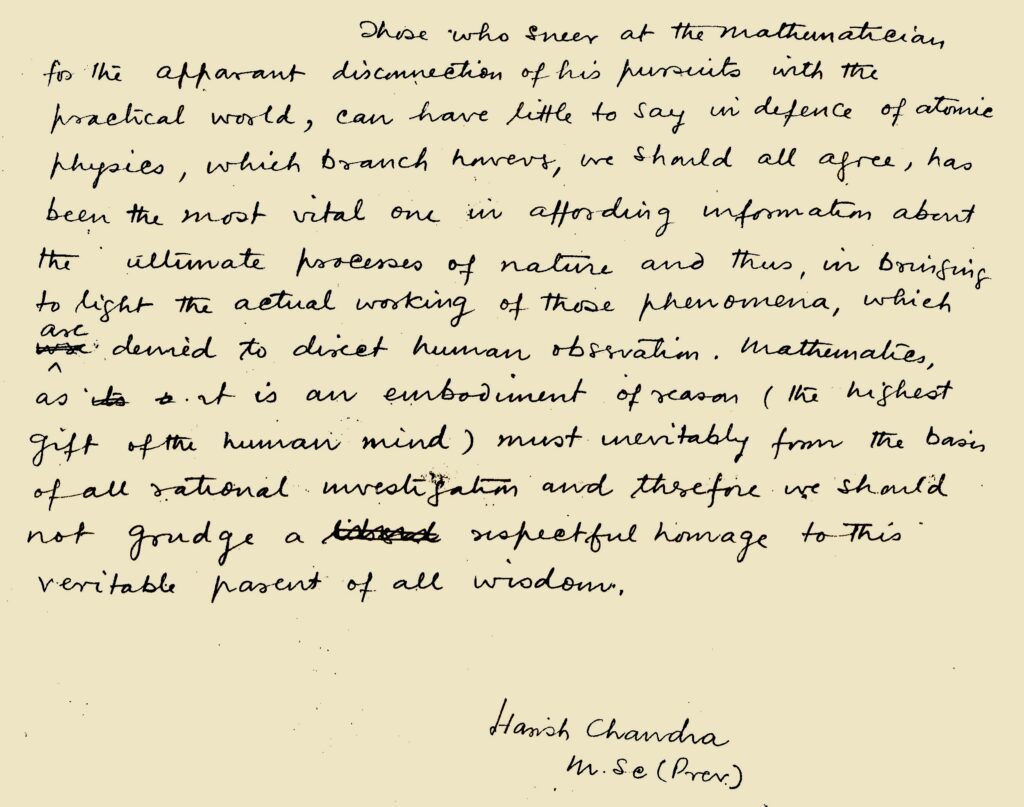
CS Aravinda, Professor of Mathematics at the Tata Institute of Fundamental Research – Centre for Applicable Mathematics (TIFR-CAM) and the Chief Editor of the mathematics magazine Bhāvanā, believes that this manuscript hints at a deep-rooted love for mathematics in Harish-Chandra from the very beginning. “Harish-Chandra felt that the workings of physical phenomena can possibly be explained in the language of mathematics, sometimes even before the discovery of the actual phenomena,” he says. “He thought of mathematical expression as a definitive way to try and uncover the hidden processes of nature.” It is likely that Harish-Chandra was inspired by recent scientific discoveries predicted by mathematics, such as the Dirac equation, formulated by Dirac in 1928 to incorporate relativity into quantum mechanics. The equation had seemingly erroneous solutions with negative energies, but instead of dismissing them, Dirac posited these solutions as antimatter – a new form of matter whose existence was experimentally confirmed four years later.
“Harish-Chandra felt that the workings of physical phenomena can possibly be explained in the language of mathematics, sometimes even before the discovery of the actual phenomena”
During his postgraduate degree in Physics, Harish-Chandra’s excellence was noticed by another scientist – Krishnan’s own mentor, CV Raman, who was his examiner. Raman, then the Chair of the Department of Physics at IISc, had several research interests, including the physics of vibrations of Indian drums such as the tabla and the mridangam. For the final exam, he included a bonus question about the vibrations of the mridangam, expecting most students to skip it. It was therefore a pleasant surprise to him that Harish-Chandra solved the question in full. Raman awarded him a full score, even though he left the other questions unanswered, according to Aravinda.
Harish-Chandra’s love for mathematics during this period is corroborated by his batchmate, Rajendra Singh, fondly referred to as Rajju Bhaiya, who went on to become an eminent mathematician himself. In a retelling of Bhaiya’s stories by Yatindra Singh, a close family friend, Singh recalls that Harish-Chandra would be engrossed in mathematics even when he was running a temperature. It was only when he rested that his fever troubled him, writes Singh.
As Harish-Chandra was finishing his Master’s, it became clear to Krishnan and Raman – both experimental physicists – that the young graduate was drawn to theory. So, they suggested that he work with Homi J Bhabha, the nuclear physicist who headed the Cosmic Ray Research Unit at IISc. Harish-Chandra heeded their advice and moved to Bangalore.
Flirting with math at IISc
At that time, Bhabha was in his third year at the Institute, having just received the Adams Award for his groundbreaking thesis titled: “The theory of elementary physical particles and their interactions”. He was a rising star in Indian science – he had just been made a Fellow of the Royal Society and the Indian Academy of Sciences. At IISc, he dabbled in both theoretical and experimental aspects of nuclear and particle physics.
Harish-Chandra’s time with Bhabha was brief – a mere two years, from 1943 to 1945 – and not many accounts of his life survive from this time. The Institute’s archives, however, provide an extensive record of Harish-Chandra’s work here.
The 1943-44 Annual Report of IISc says: “A paper by Prof Bhabha and Harish Chandra ‘On the theory of point particles’ which is being published in the Proceedings of the Royal Society has established a very important theorem … A paper by Mr Harish Chandra on ‘The removal of the self-energies of point particles’ … gives a general solution to a problem of some importance and is also being published in the Proceedings of the Royal Society.”
The trajectories of point particles in time and space was one of the two topics that Harish-Chandra worked on with Bhabha while at the Institute. The other topic was that of relativistic wave equations, possibly motivated by work Dirac had published at that time. Although no papers were published that year on physics, the Annual Report refers to two colloquia conducted by him on the subject.
The Report also mentions 12 lectures that Bhabha delivered as part of a course he offered that year: The Theory of Finite Groups. These lectures may well have been Harish-Chandra’s first formal introduction to the subject of groups, a topic that he would later dedicate his life to. Taken together, the account of his work during his first year at IISc paints a picture of a physicist still fresh in the field, but filled with a deep mathematical curiosity and perhaps a nebulous idea of his true calling.
“At IISc, Harish-Chandra was a physicist still fresh in the field, but filled with a deep mathematical curiosity and perhaps a nebulous idea of his true calling”
The 1944-45 Annual Report shows Harish-Chandra emerging as a theoretical physicist in his own right, publishing many more papers as a single author. While he continued his work on point particles and scattering with Bhabha, Harish-Chandra published two papers which were more mathematical. One of them, titled Algebra of the Dirac-Matrices, possibly inspired by Bhabha’s colloquia on the same subject a year ago, delves into the algebraic properties of the Dirac matrices, a set of objects discussed in the context of the Dirac equation. Another paper was on the σ-symbols, a class of objects associated with transformations of the Lorentz group. These papers were independent of his work with Bhabha.
Just as Harish-Chandra was finding his feet as a theoretician, Bhabha’s proposal to the Sir Dorabji Tata Trust to set up the Tata Institute of Fundamental Research (TIFR) was accepted, and Bhabha turned his attention to his new project. TIFR was eventually established in Bombay (now Mumbai) in 1945. The year also marked Harish-Chandra’s final year at IISc, after which he moved to Cambridge University, having been accepted by Dirac as a research student.
It is not clear whether Harish-Chandra himself was inclined to make the move or whether he was encouraged to move by Bhabha, also an alumnus of Cambridge. Rajat Tandon, Professor at the University of Hyderabad and nephew of Harish-Chandra, suggests that the former may have been the case. “The impression I had was that Harish-Chandra was not very fond of Homi Bhabha. He felt that Bhabha had very little contribution to their joint papers. But that,” he adds, “is not unusual for a youngster to feel.”
Courting math at Cambridge
At Cambridge, point particle physics was one of Dirac’s research interests, a subject that Harish-Chandra was well-acquainted with. Even having just arrived at Cambridge, he was already grappling with the thought of switching lanes to mathematics, as expressed in a letter to Bhabha written a few months after arriving in England. In the letter, he tells Bhabha that besides attending his lectures on quantum mechanics (lectures that he would promptly abandon), he was also “attending all advanced lectures in pure mathematics”, titled “’Theory of Numbers’, ‘Functions of a Real Variable’ and ‘Linear Algebras’”. Towards the end of the letter, he adds: “I am getting more and more interested in pure mathematics and perhaps after I have learnt enough of it I might change over to it.” It was perhaps fortunate that the primary focus of Harish-Chandra’s research at Cambridge and what would be his doctoral thesis was a fairly mathematical topic – classifying the irreducible representations of the Lorentz group.
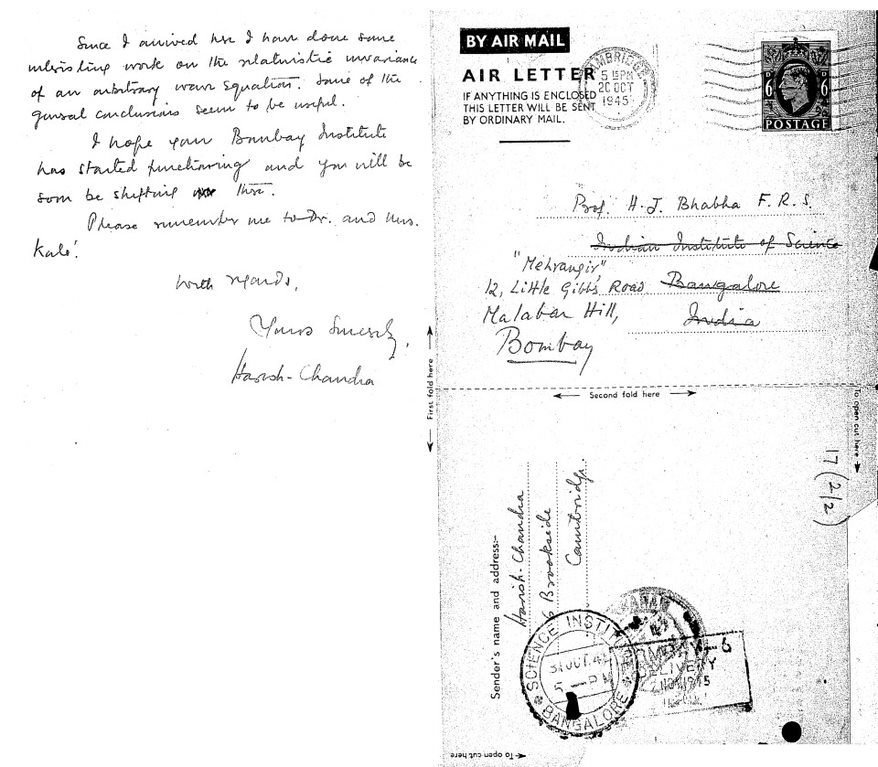
In mathematics, a group is a collection of elements that can be combined in a certain way, called an operation. Groups are used in many different areas of mathematics, such as algebra, geometry, and number theory, and help us understand the properties of objects and structures in mathematics.
A representation of a group is a way of associating each element of the group with a matrix or transformation, such that the group operation is preserved. Representations allow us to handle groups, a rather abstract mathematical concept, more concretely. They are of physical significance as well, since they often correspond to observable quantities, particularly for the Lorentz group – a group that encodes the structure of Einstein’s special relativity.
N Mukunda, former Professor at the Centre for Theoretical Studies at IISc, explains the meaning of irreducible representations: “The idea of an irreducible representation is a representation that cannot be broken down into smaller pieces, in a qualitative sense.”
By studying irreducible representations of a group, one can gain valuable insights about the group itself. But, for the Lorentz group, finding these representations is not as straightforward, as Mukunda points out. “There are two types of representations [of the Lorentz group]: finite dimensional ones, like the ones that correspond to the location of the object in space and time, or the ones that correspond to the energy and momentum of the object. All of these are non-unitary. The unitary representations have to necessarily be infinite dimensional.”
In 1945, Dirac published a paper that sought out these infinite-dimensional unitary representations of the Lorentz group, asserting that they may be of particular importance in physics. Harish-Chandra essentially solved the problem between 1945 and 1947, identifying and categorising the full list of unitary irreducible representations. This work, in essence, set the course for the rest of his life’s work in representation theory. More importantly, however, was the realisation he attained about physics as a whole. “I became aware that my work on the Lorentz group was based on somewhat shaky arguments … I once complained to Dirac about the fact that my proofs were not rigorous and he replied, ‘I am not interested in proofs but in only what nature does.’ This remark confirmed my growing conviction that I did not have the mysterious sixth sense which one needs in order to succeed in physics … ,” writes Langlands quoting Harish-Chandra.
Cementing the relationship at Princeton
Dirac took Harish-Chandra along as an assistant to the Institute of Advanced Study at Princeton in 1947. By this time, besides believing that he did not possess the “mysterious sixth sense” to do physics, Harish-Chandra was also increasingly disillusioned with it. At Princeton, he would write just one paper in physics, which would also be his last on the subject. Taking no breaks, he seamlessly switched from physics to mathematics, publishing his earliest papers in the latter subject in 1949.
Once Harish-Chandra made the switch, a topic that attracted his attention was Lie groups, of which the Lorentz group is an example. His interest was also spurred by Claude Chevalley, a lecturer at Princeton and a major inspiration for his work. Harish-Chandra would publish papers in the coming years on Lie groups and their associated Lie algebras, gaining an insight unparalleled by many, even seasoned mathematicians. His work culminated in his award-winning paper on the representations of semi-simple Lie algebras – a paper that lays out results and methods that are now considered standard in the field. This revolutionary work marked the beginning of his professional foray into mathematics, one that would continue for the rest of his life.
For his contributions to mathematics, Harish-Chandra received several honours. “In 1973, he was elected a fellow of the Royal Society. The Indian Mathematical Society awarded him the Srinivasa Ramanujan Medal in 1974, and he was elected a fellow of the Indian National Science Academy and the Indian Academy of Sciences in 1975,” writes Howe. In 1981, just after he became a US citizen, he was also elected to the National Academy of Sciences.
Even though Harish-Chandra kept himself fit – he liked taking long walks and was disciplined about his diet – he was prone to heart attacks. He experienced his first attack when he was only 46. After surviving three more, he died when he suffered his fifth heart attack on 16 October 1983. His ashes were scattered in Princeton and in the Ganga in Allahabad (now Prayagraj). The same year, a conference had been planned for his 60th birthday, but instead it was held as a memorial, Howe adds.
Clearly, it was at Princeton that Harish-Chandra made a clean break with physics and became a pure mathematician. And it was at Cambridge that his relationship with mathematics flourished. But it was at IISc that he delved seriously into mathematics for the first time. Harish-Chandra’s stint at the Institute was significant for another reason. He met his wife here. “[At IISc], he spent the first six months lodging with old friends from Allahabad, Mrs H Kale, who had been his French teacher at the university, and her husband Dr GT Kale, a botanist who had moved to Bangalore to take up duties as librarian at the Institute,” writes Langlands. It was during his stay with the Kales that Harish-Chandra met their daughter, Lalitha – Lily to her family and friends – whose hand he asked for in marriage on a visit to Bangalore in 1953.
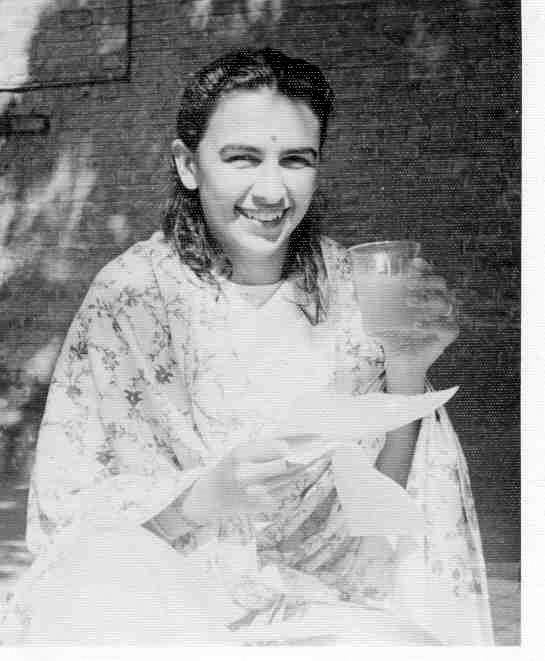
One of Lalitha’s and Harish-Chandra’s children, Premala, imbibed her father’s love for nature and is now a professor in condensed matter physics at Rutgers University, USA.
On the occasion of Harish-Chandra’s 70th birth anniversary, she said at Allahabad University: “[My father] always retained a childlike fascination, a youthful wonder for the natural world. Most of all he was a man of many dreams, only some of which he was able to fulfil. The realisation of these dreams and more is now up to us.”
Kaustubh Roy is an undergraduate student at IISc, and science writing intern at the Office of Communications


